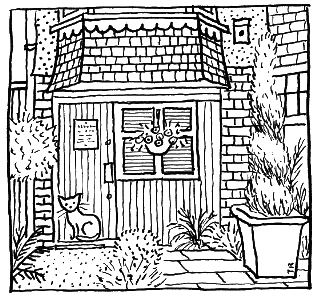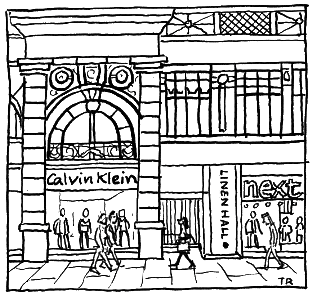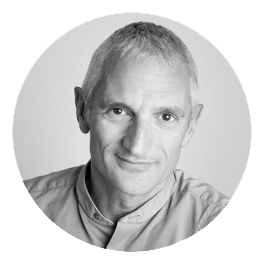Questions about Osteopathy
Osteopathy is a form of healthcare including diagnosis and treatment of a wide range of medical conditions. Osteopaths apply a range of techniques to help reduce pain, increase joint mobility, relieve muscle tension and enhance the blood and nerve supply to tissues, helping the body’s own healing mechanism.
Below are some of the more frequently asked questions relating to Osteopathy and visiting an Osteopath
WHAT’S THE DIFFERENCE BETWEEN (CLASSICAL) OSTEOPATHY & (CLASSICAL) CHIROPRACTIC?
NB when reading the following points, it is important to realise that there are as many similarities as differences between the two professions. Differences, when they occur, can be found not only between the professions but equally between practitioners of the same profession (e.g. in osteopathy: classical/structural osteopathy versus ‘cranial’ osteopathy; in chiropractic: classical chiropractic versus McTimoney chiropractic)
- chiropractors focus mostly on spinal integrity, using x-rays of the spine to form a diagnosis: osteopaths use palpation (touch) of soft tissues (muscles, ligaments and tendons) and spinal positioning in conjunction with overall postural balance to form a diagnosis
- chiropractors work mainly on the spine; osteopaths work on the spine but also on the whole body, including peripheral joints
- chiropractors use more manipulative techniques; osteopaths may use manipulation in conjunction with soft tissue and mobilisation (stretching of joints) techniques
WHAT’S THE DIFFERENCE BETWEEN OSTEOPATHY & NATUROPATHIC OSTEOPATHY?
To understand the difference, it is best to understand the Naturopathic philosophy. Naturopathic osteopathy tries to understand the patient’s symptoms not only from physical factors but also, if relevant, from emotional and/or nutritional factors. It believes that health derives from a balance between these three fundamental cornerstones (physical, emotional, biochemical).
ARE MANIPULATIONS USED?
The answer is sometimes. Sometimes not at all, particularly if a patient does not want them or it is unsafe to do so! It is worth remembering that as part of an osteopath’s training, indications for NOT using a technique (manipulation or otherwise) are thoroughly taught. Manipulations are just one of many techniques available to an osteopath. I personally use an eclectic approach and tailor my treatments according to what I think the patient requires.
DO MANIPULATIONS HURT AND ARE THEY DANGEROUS?
If practised by a qualified and sensitive osteopath, the vast majority of time they are not dangerous. I believe that manipulations shouldn’t hurt if the osteopath has good technique and is respectful of a patient’s sensitivity.
HOW MANY TREATMENTS WILL I NEED?
In my experience, resolving acute pain, wherever it is, is the relatively easy part. Understanding how the pain came about and more importantly why is more difficult.
I think unfortunately osteopathy can be seen as a ‘quick fix’ for both acute and chronic pain. Yes, it can resolve pain quickly but so can taking painkillers! I believe that unless at least an understanding of why the pain started (whether it be physical/postural and/or emotional and/or nutritional), there can be an increased probability of pain returning. I believe that underlying many acute problems there is a history of physical and/or emotional patterns, which the patient may not always be aware of.
I am happy to work with what a patient needs – if it is acute symptom resolution without any further understanding/resolution of causative factors, then I will try to resolve the pain as fast as I can, whilst respecting the patient’s innate ability to recover.
Sometimes there are very simple answers and no further exploration, whether it is on a physical, emotional or nutritional level, is necessary.
Respecting that a patient/person is not just a physical entity but an integration of interwoven strands of differing qualities, is to me of central importance when trying to resolve pain both short AND long term.
It follows therefore, that patients can have 2 or 3 treatments or however many are needed to try to resolve underlying patterns, whether they are postural imbalances or emotional/nutritional factors.
WHAT’S CAUSING MY PAIN/SYMPTOMS?
See the above!
CAN I CLAIM ON MY INSURANCE?
The majority of insurance companies now cover osteopathy. Apart from AXA/PPP, Osteopathy with Robin Kiashek may be claimed with an insurance company but individual policies must be initially checked for complementary medical coverage.
WHAT IS THE GENERAL OSTEOPATHIC COUNCIL?
The GOSC was set up to implement and oversee the 1994 Act of Parliament, which requires that anyone practising as an osteopath before May 2000 will have had to undergo a rigorous application procedure with the GOSC to continue practising. As from May 2000, the word ‘osteopath’ will have legal status.
For more information visit The General Osteopathic Council’s website.
WHAT HAPPENS AT AN OSTEOPATHY APPOINTMENT?
From the initial consultation to patient discharge, I have set out a step-by-step guide as to what happens when you visit an Osteopath. Learn more about what you can expect when you visit one of my Osteopathy clinics based in W1 and N2. What happens when you visit my osteopathy clinics?
WHERE ARE YOUR CLINICS?
As a qualified and registered Osteopath serving W1, N2 and N10 and the surrounding areas, I help my patients understand, overcome and prevent a myriad of issues and the symptoms they may present with.
Whilst I have been long established in North London, my decision to also open a Soho clinic was initially to facilitate patients who I already treated in my initial clinic but who worked in the centre of London around the Regent Street/Oxford Street and Soho areas and wanted a daytime appointment. I found that through word of mouth The Robin Kiashek Central London Osteopathy Clinic started to expand and I now treat patients from all over London and surrounding counties.
HOW DO YOU KNOW YOU’LL RECEIVE GREAT PATIENT CARE AT OUR CLINICS?
With over 20 years experience of Osteopathy and allied therapies, I offer safe, gentle and effective treatment for a wide age range of patients.
In addition to being an Osteopath, I am also qualified in a range of other therapies such as acupuncture, naturopathy, life coaching, NLP and autogenic training(similar to Mindfulness) , allowing you to benefit from an integrated approach to your wellbeing. I don’t just want to make you better; I want to keep you feeling better.
I studied with International Teaching Seminars to gain a qualification as a Master Neuro Linguistic Practitioner (NLP) and to become an accredited Life Coach.
Every patient that visits one of my clinics is treated as an individual. For example we all have a completely different background in terms of medical conditions, lifestyle, postural awareness, general health and nutrition all interwoven sometimes with background emotional experiences and so a bespoke solution and treatment plan is created for every patient.
The overall aim? To reduce or prevent recurrences of whatever issue is troubling you but also to restore your body’s natural functions.
HOW CAN I HELP? OSTEOPATHY AND BEYOND
Every treatment I offer, from Osteopathy to Acupuncture and beyond, is based on understanding you as an individual. It is through this attention to detail that I can achieve my main goal – to provide you with the highest standard of care – and assist with a variety of needs. At times this means a short course of treatments to cure a specific ailment and on occasions this means working with patients over longer period of time to make larger lifestyle changes and treat underlying issues.
To find out more about Life coaching and NLP please click here
To find out more about Autogenic training please click here
TELL ME MORE ABOUT WESTERN MEDICAL ACUPUNCTURE?
Also known as Western Medical Acupuncture or WMA, Western Acupuncture uses fine needles to target the trigger points associated with certain ailments to work towards a variety of objectives, from pain relief to helping with nausea and beyond.
The roots of Western Acupuncture can be found in traditional Chinese acupuncture, a therapy practiced there for thousands of years. Yet, while Chinese acupuncture applies principles such as those of qi and Yin versus Yang, Western Medical Acupuncture focuses on sensory stimulation or stimulation of the nervous system. Furthermore, the Western practice places less emphasis on targeting the specific points on the body which the classical approach has favoured and more on the methods and levels of pressure being applied.
In fact, while they may share several similarities, Western Acupuncture represents an evolution of its ancient counterpart and one which combines its principles with a scientific approach and modern medical knowledge. It has benefitted from an increasing body of research conducted over the past three decades which has provided empirical support for acupuncture.
It is perhaps these studies, combined with its basis in fields ranging from pathology to anatomy, which sees Western Acupuncture being used more and more by medical practitioners.
WESTERN ACUPUNCTURE IN PRACTICE
Western Medical AcupunctureFor those interested in pursuing a course of Western Acupuncture, one of the main queries is how it works in practice.
In line with its scientific approach, Western Medical Acupuncture usually begins with a conventional medical check looking at the client’s symptoms. Based on this examination, I work towards a diagnosis and to providing advice as to the best course of action.
The application of Western Acupuncture is not dissimilar to that of Chinese acupuncture. It involves the delicate application of fine needles to certain points on the body which are then gently stimulated, either manually or electrically. The points on which the needles are placed may be on the actual location of pain or discomfort or on more unexpected places. Indeed, many important points are found in the feet and hands.
Some things to bear in mind with Western Acupuncture are:
- The length of each treatment varies, ranging from a few moments up to half an hour.
- The therapy is a calm, soothing experience which the majority of clients find is virtually pain free.
- I use only sterilized, disposable needles, which are meticulously disposed of after each single use.
WESTERN ACUPUNCTURE: THE THEORY
The development of Western Acupuncture has been based in large part on scientific exploration of the field of acupuncture. Over time, several theories have been expounded as to the effectiveness of acupuncture.
One longstanding principle is that the very insertion of needles into the body sends messages to the nervous system and brain via the release of natural chemicals. Known as the “neurohumoral mechanism”, this concept has played an important role in promoting understanding of acupuncture, but has now largely been superseded by a new approach, the “morphogenetic singularity” theory.
The name “morphogenetic singularity” – morphogenesis meaning embryo and singularity referring to singular points or centres within the body – offers a hint into the thinking behind the theory. It is based on the idea that from the very early stages of development, the human body forms a network of controlling points, which manage the body from brain to nervous system. By understanding and mapping these networks, acupuncture works to stimulate relevant points to promote the balance, with the aim of achieving certain desired effects.
WESTERN ACUPUNCTURE: THE RESEARCH
With more and more research being carried out in the field of acupuncture, there is a growing body of evidence helping to prove its efficacy. In fact, since the first empirical evidence of acupuncture as an effective form of pain relief some thirty years ago, an extensive number of reputable studies have been conducted, helping to quash past criticisms of a lack of medical evidence.
Furthermore, the question of a placebo effect has also largely been laid to rest. In particular, growing research proving the effects of even a light sensory touch in acupuncture is helping to disprove the notion of “sham acupuncture” which has caused the therapy to be discredited in the past.
For more information on Western Acupuncture or to book an initial consultation in one of my London clinics, please feel free to contact me.
HOW DOES LOW LEVEL LASER THERAPY WORK?
Put simply, by directly treating damaged tissue with particular and appropriate wavelengths of light, your body’s healing cells are stimulated and recovery optimized.
The physiological effects of Low Level Laser Therapy have been extensively researched and tested by medical professionals and the details of the mechanisms are becoming increasingly understood.
Initial absorption by the mitochondria (the cell’s power producers, converting light energy into forms usable by the cell) leads to increased fibroblast cell proliferation and migration, with modulation of cytokine levels, growth factors, inflammatory mediators and increased tissue oxygenation which is all part of your body’s natural healing process.
LLLT is especially effective for chronic conditions or where your immune system has been compromised as it can also re-start a stalled healing process.
Combining these effects with those from its use in stimulating acupuncture and ‘trigger’ points, LLLT is an excellent therapy for treating, amongst other ailments, back pain, frozen shoulder, tennis elbow, persistent headaches and migraines and arthritis.
THE TREATMENT
Low Level Laser Therapy is quick, pain-free, easy to apply and effective and is available from Robin Kiashek, who has over 20 years experience as an osteopath, at both the Soho Complementary Clinic in Regent Street, London W1 and also at The Twyford Practice in East Finchley, London N2.
Probes are placed on the skin at specific points on or relating to the damaged area and light, which is controlled for wavelength, power, pulsing rate and duration passes into the tissue.
Dependent on your particular condition and its severity, LLLT is offered on a once or twice-weekly basis using progressively less frequent treatments until your condition has been healed. You will feel nothing at the point of application and many report a wonderfully relaxing sensation, due in part to the release of endorphins through your body.
AN ESTABLISHED & SAFE THERAPY
Low Level Laser Therapy is extremely safe and is used to treat a wide variety of conditions in medical organisations the world over. Often called ‘soft’ or ‘cold’ laser, the low intensity beam doesn’t cut or burn and has no demonstrable side-effects, other than the feeling of slight euphoria and relaxation!
The vast majority of people are suitable for LLLT however there are certain cautions and contraindications as with any form of electrotherapy equipment but Robin Kiashek will talk you through everything you need to know during your consultation.
WHAT RESEARCH BACKS UP OSTEOPATHY?
RESEARCH ON OSTEOPATHIC THERAPY
London Osteopathy ResearchOsteopathy or Osteopathic Therapy has been the subject of much research and examination. The following refers to some of the institutions that undertake this research.
THE NOCR
One institution which is dedicated to progressing and promoting the research of Osteopathic Therapy is the National Council for Osteopathic Research (the NCOR). Governed by members of the Osteopathic and medical communities, the NOCR is based at the Clinical Research Centre in the School of Health Professions at the University of Brighton.
You can learn more about their research on Osteopathic Therapy on the NOCR website.
THE GENERAL OSTEOPATHIC COUNCIL
The General Osteopathic Council (the GOsC) is the body that regulates the Osteopathic profession. As part of this role, the GOsC conducts ongoing research into the way in which Osteopathic Therapy is regulated.
You can learn more about the research of the GOsC on their website.
North London Clinic
Central London Clinic
Book an Appointment
Call 020 8815 0979
London Osteopath Clinic Locations
North London Osteopath Clinic
In North London we treat patients from Finchley, Muswell Hill, Crouch End, Arnos Grove, Wood Green, Highgate and even further afield.
Central London Osteopath Clinic
Our Central London (Regent Street) W1 clinic treats patients from Soho, Marylebone, Mayfair, Harley Street and Fitzrovia to name but a few.



